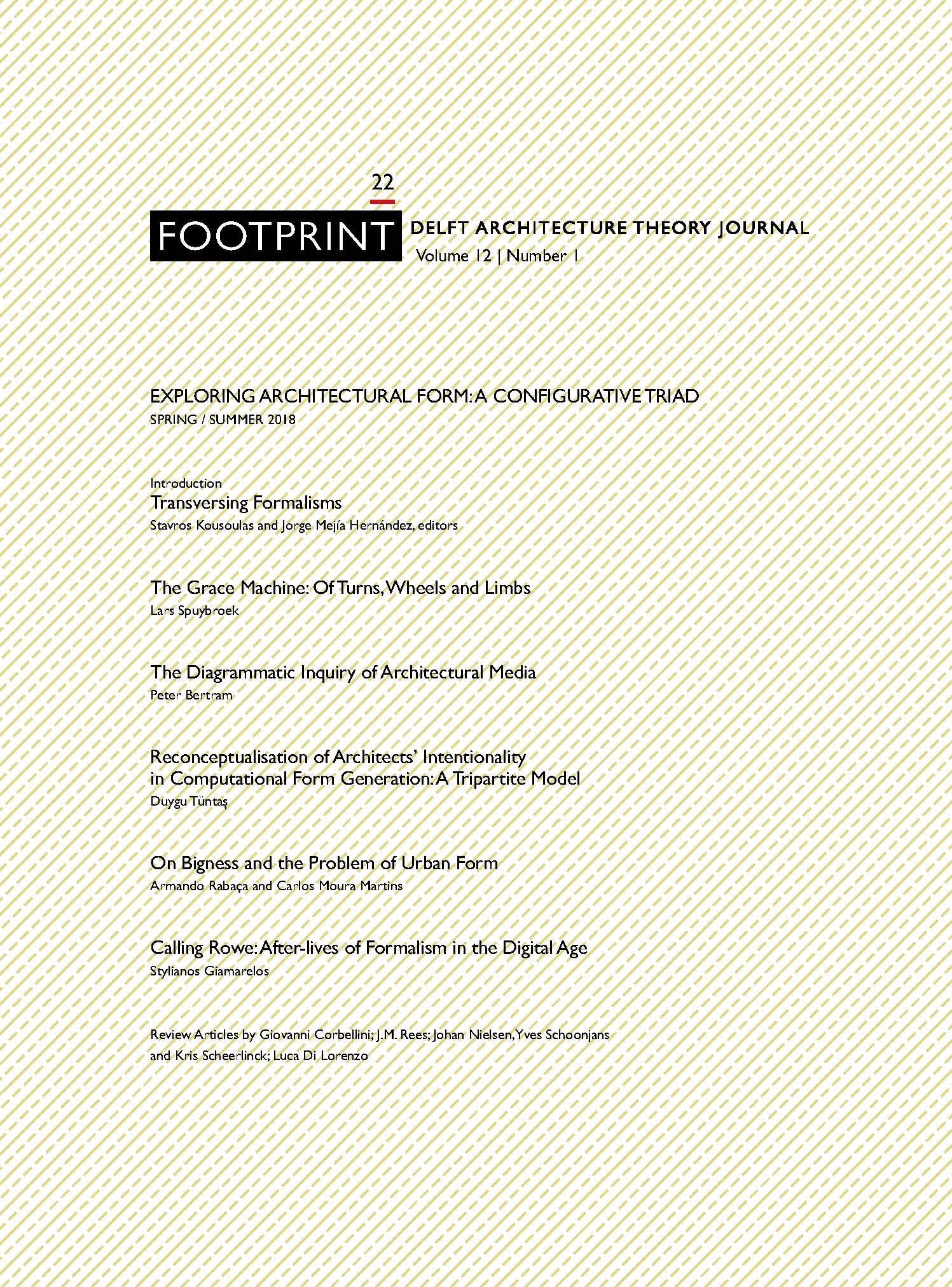Issue # 22 | Spring / Summer 2018 | Exploring Architectural Form: A Configurative Triad

This issue of Footprint follows a tripartite trajectory regarding formal studies. On the one hand, it includes reflections on the way built form is produced, while, on the other, it gathers studies that examine how architectural form appears in discursive and communicative terms. Finally, it serves as an attractor for multiple inquiries into the different relations that can be established between human actions, understood in the broadest possible terms, and the shape of the built environment. By interrelating these three approaches, the aim is to embrace and braid object-based approaches to form with approaches that examine the reciprocity of formal emergence and studies dealing with in-formation. Emulating Joseph Kosuth’s well-known triptychs, a constant problematisation of architectural form is situated between these three topical interpretations, understood as architecture’s configurative triad. Acting on the threshold of various discursive outlines, the contributions to this issue transverse several kinds of formalisms, highlighting that beyond the limitations of any specific discourse, their heterogeneous assemblage can afford the production of theoretical, methodological and conceptual innovations in the field of contemporary formal studies.
Issue's editors: Stavros Kousoulas and Jorge Mejía Hernández




